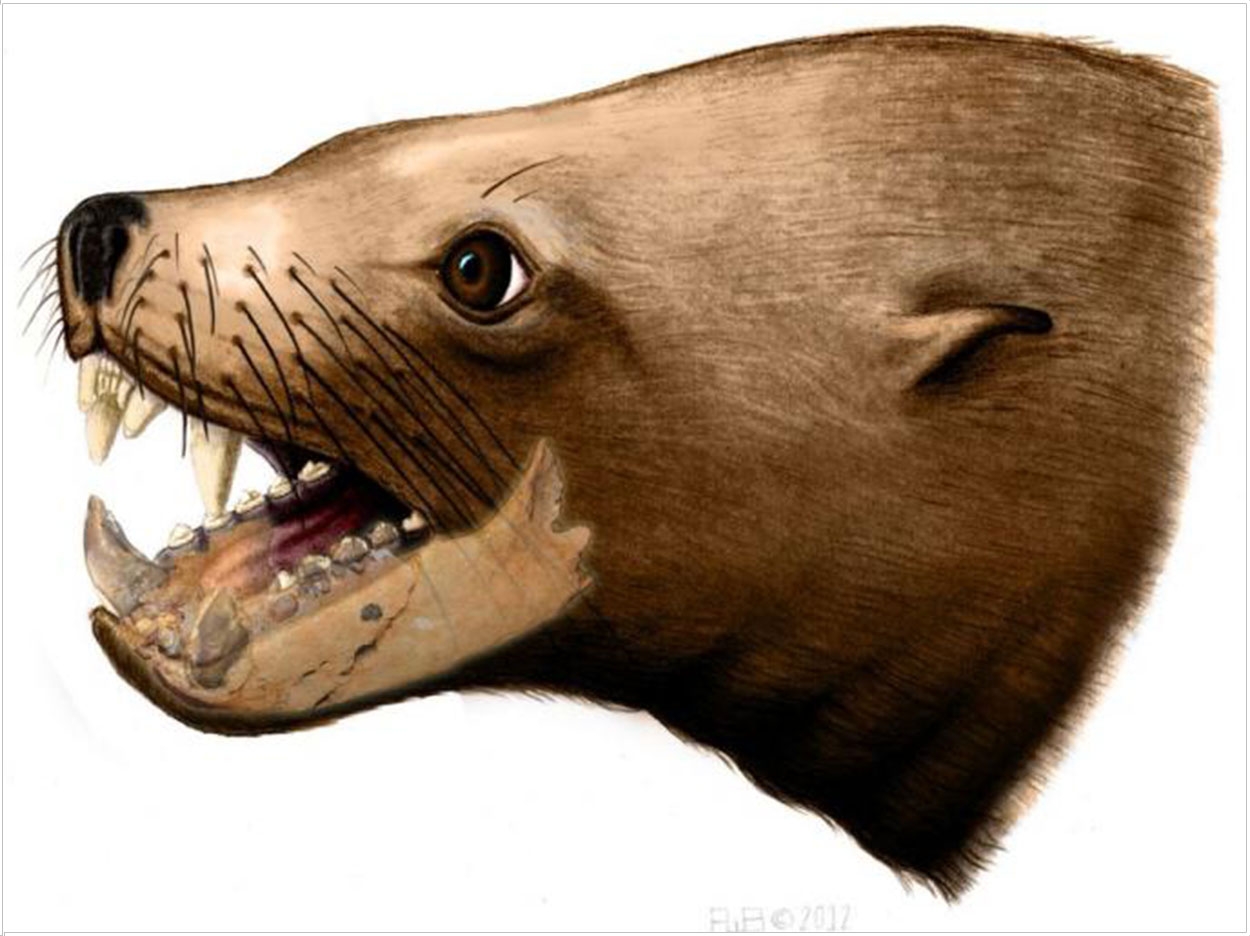
Biologists have thought that an ancient walrus known as Pelagiarctos thomasi roamed the waters off the coast of California long ago hunting other marine mammals. But using techniques gleaned from dental imaging, research suggests these animals ate much smaller fare.
“Pelagiarctos was originally thought to have been a ‘killer walrus’ that fed on large prey such as other marine mammals, but we found it has an enamel layer reasonably similar to that of modern New Zealand fur seals and sea lions, which are fish and squid eaters,” said study co-author Dr. Carolina Loch of the University of Otago.
The researchers embedded, sectioned, and etched the teeth of the New Zealand fur seal and sea lion—also known as pinnipeds, or “fin footed”—as well as fossils from the Pelagiarctos and analyzed them using scanning electron microscopy.
The enamel of all the samples was prismatic and measured 150 to 450 µm on average. It comprised transversely oriented Hunter-Schreger bands (HSB) from the enamel-dentine junction (EDJ) to near the outer surface, where it faded into prismless enamel less than 10 µm thick. The variable HSB width averaged from 6 to 10 prisms and presented an undulating course both in longitudinal and cross sections.
The overall organization of enamel was similar in all teeth sampled, but thicker in canines and postcanines than in incisors. The crowns of all teeth sampled were uniformly covered by enamel, but the grooved incisors lacked an enamel cover on the posterior side of the buccal face.
Large tubules and tuft-like structures were seen at the EDJ. Also, HSB enamel as well as tubules and tufts at the EDJ suggest increased occlusal loads during feeding, a biomechanical adaptation to avoid enamel cracking and failure.
This enamel structure meant the Pelagiarctos was unlikely to be crunching through large bones without cracking its teeth, suggesting that it was a dietary generalist like the modern pinnipeds that the researchers also studied.
Loch also said that this was the first time that scanning electron microscopy has been used to examine the enamel ultrastructure of fur seals and sea lions as well as the Pelagiarctos. She added that it shows how dental techniques and methods could be used to answer questions with broader implications in the biology and evolution of animal species.
“Features and structures of the enamel layer have long been associated with differences in diet and tooth usage among animals and can also help in understanding the relationships among fossil and living species,” said Loch. “Teeth are not only the focus of modern dentistry, but also valuable tools for biologists, archeologists, and paleontologists.”
Related Articles
Enamel Evolved from Fish Scales
Beavers Provide Model to Improve Enamel
Calcium’s Path to Enamel Formation Mapped Out












